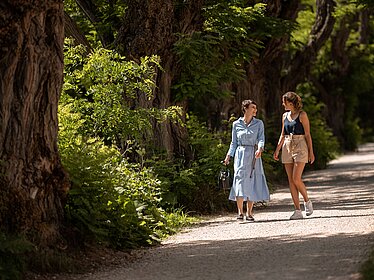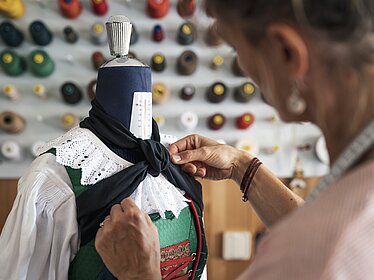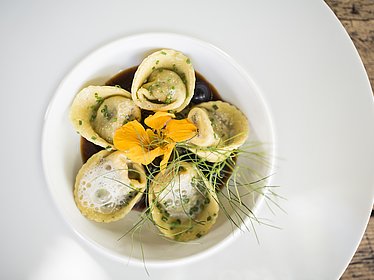Exploring the great outdoors
Urban Vibes
A feast for the senses
My holiday
Menu
Exploring the great outdoors
-
Exploring the great outdoors
- Bike
- Hiking and walking
- Skiing and winter sports
Menu
Urban Vibes
-
Urban Vibes
- Vibrant old town
- Art and culture
- Shopping
- Water
Menu
A feast for the senses
-
A feast for the senses
- White wine
- Local products
- Törggelen harvest festival
- Dining
Menu
My holiday
-
My holiday
- Brixen as a holiday destination
- Arrival and local travel
- The latest from Brixen
- Events
- Holidaying in Brixen
- Home
- A feast for the senses
- Törggelen harvest festival
- The origins of Törggelen

Original Törggelen from the Eisacktal Valley
Paul Huber, winegrower and innkeeper at the Griesserhof wine tavern, on the origins of the South Tyrolean custom of Törggelen, lifelong friendships forged over roasted chestnuts and the balance between tradition and modern life
Show more Show less
Paul, can you explain the history of Törggelen and the Buschenschank farmhouse inns of Brixen and the Eisacktal valley?
The harvest tradition of Törggelen has a long and storied history. The word originally comes from Torggl, which means “wine press”. Many years ago, farmers from the region walked from farmhouse to farmhouse every autumn to taste each other’s young wine – the freshly pressed grape juice known as “must”– and enjoy regional foods like Speck ham and sausage. Over time, other visitors and tourists began to follow in the farmers’ footsteps and soon the first Buschenschank farmhouse inns opened their doors.
What’s your first memory of Törggelen?
I don’t remember a time when it wasn’t part of my family’s life. When we were children, the dining room was our place to play, but every autumn it was given over to our guests. All our toys were packed away, the guests became centre of attention and our parents had no time for us. We didn’t like that much! But the fantastic thing was that there was food galore all day long. The Krapfen pastries were just incredible! The whole house smelt of sauerkraut for weeks – we’d even catch the whiff of pickled cabbage under our bedsheets! I can also still recall the scent of hot lard and the smoke coming from the wood-burning stove. We used to love playing with the guests’ children and would roast chestnuts together. The friendships we forged back then have lasted until this very day.
For a while, many farmhouse inns became caught in the trap of using mass-produced products to prepare cheap dishes for busloads of tourists. All they cared about was making as much food as they could as cheaply as possible. It was a feeding frenzy! How and why was this trend reversed?
That was terrible! Every evening, it was as if our traditional dining rooms had been turned into beer festivals. The guests didn’t care what they were eating and blindly accepted cheap Speck served with Coca-Cola. Luckily, people stopped wanting that. The innkeepers certainly – and gradually the guests too. It became clear that the Törggelen tradition held much more potential if it was done properly, with excellent, high-quality products. The Red Rooster platform changed everything.
“The only chestnuts we roast are the ones which have fallen from our trees”
What is Red Rooster?
Numerous farmhouse inns came together under the Red Rooster banner to promote the use of regional products and to set some basic rules. Under this initiative, a farm can only call itself a Buschenschank if it serves mostly its own homemade Schlutzer ravioli, sausages, ribs, cabbage, Krapfen pastries and chestnuts, etc., or products from neighbouring farms. Ideally, the wine should also be made by the farm itself. In my case, I know exactly where the food I prepare was produced. For example, I’ll never serve chestnuts if the ones on our farm aren’t ripe. I won’t just go out and buy them from any old place. Here, the only chestnuts we roast are the ones which have fallen from our own trees. And that’s that! In keeping with tradition, Törggelen meals should also be served in old, cosy farmhouse dining rooms, typically in autumn when the days are shorter, the leaves are ablaze with colour and everything is ripening.
How does this tradition fit in with modern life and how do you keep it alive?
Simple dishes made with just a few key ingredients are definitely in keeping with the times. What more could anyone want than some beautifully cooked potato fritters with sauerkraut? Today’s guests certainly expect to dine in slightly more sophisticated surroundings, but they still want the ambience of a centuries-old dining room. And the local wines from the Eisacktal valley are now so excellent that they more than deserve to be drunk from really nice wine glasses. In future, Törggelen customs look set to feature more heavily in spring as well. Many farms produce meat, herbs and a wide assortment of vegetables which can be enjoyed even after the winter months. The rich variety of South Tyrolean cuisine had almost been forgotten, but farmhouse inns like mine are breathing new life into everything we have on our doorstep. More and more, Törggelen is about the simple pleasure of going for a good hike and stopping to enjoy some delicious food.











